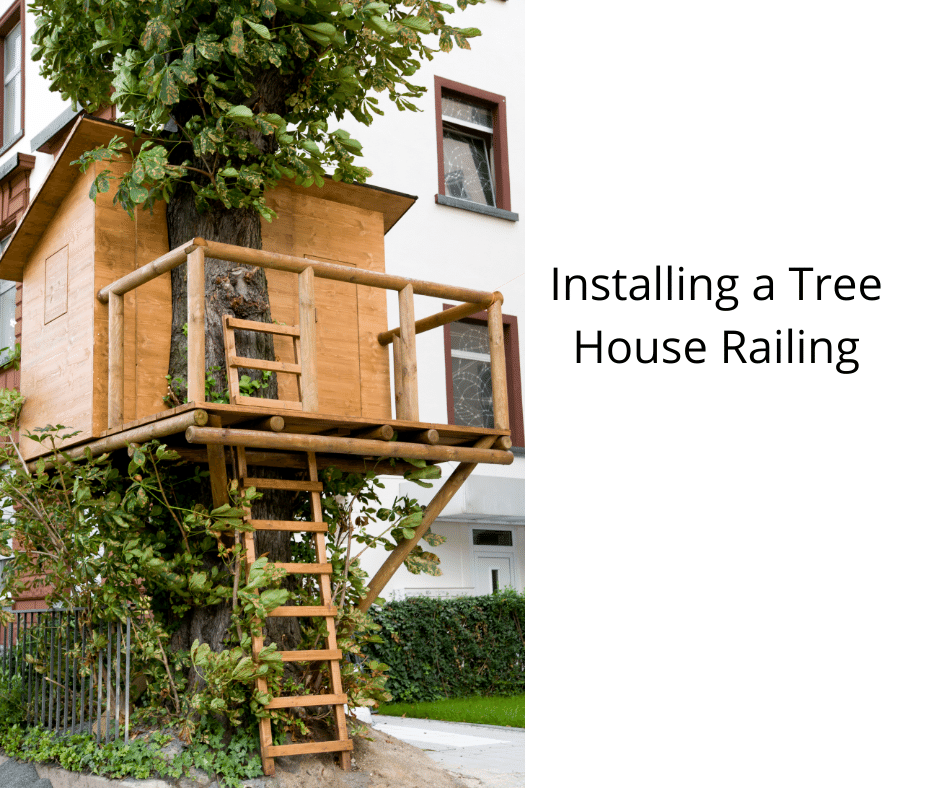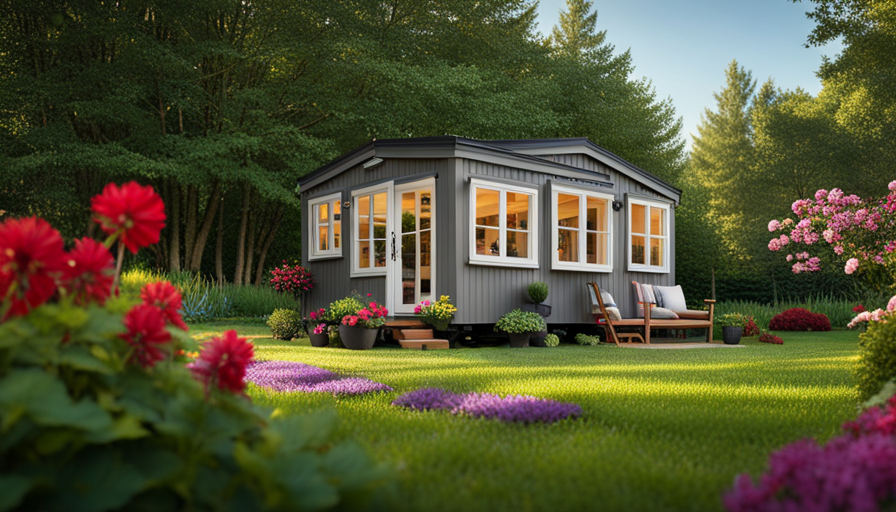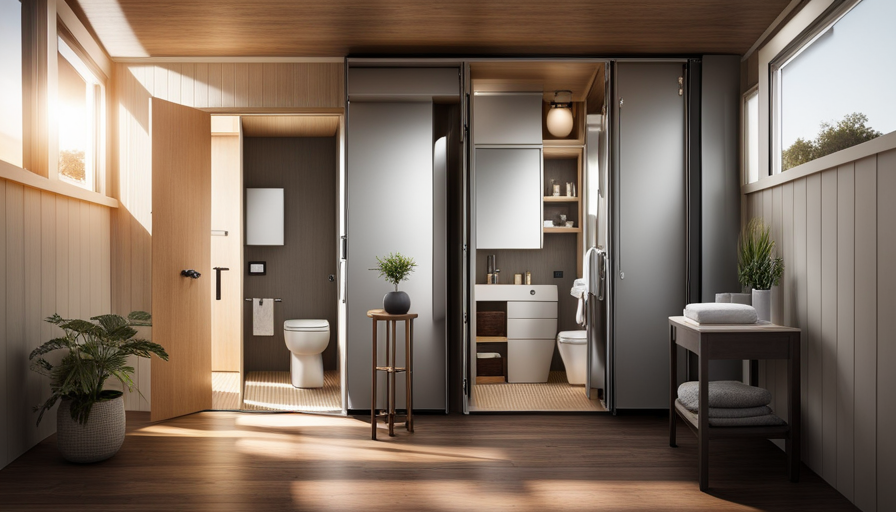If you are thinking about building a treehouse, adding a railing is essential. While it may seem daunting, the process is actually quite simple. There are several ways to create a railing for your treehouse, each with slight variations depending on your needs, but all with the same goal in mind. Once you have decided to include a railing, it is important to sketch out and plan its design. After the design phase is complete, the next step is to move forward with the installation.
Build a Tree House
Building a treehouse requires the construction of a treehouse railing. You should build your railing 36″ high and four inches apart. You can use wood mulch as padding between the balusters and the tree. When building your treehouse, choose a sturdy tree with branches that form a “V.” This will provide extra strength and stability to your railing. After you finish the treehouse, you can paint it and decorate it with various finishes.

To build a treehouse railing, you need first to prepare the platform. To do this, you’ll need two pressure-treated 2×10 wood beams. Cut the main beam to the desired height and attach it to the tree with 3/4-inch lag screws. Be sure to use screws that are long enough to penetrate the main beam and sink into the heartwood of the tree trunk. Then, pre-drill the posts using a corded drill. Use an extra-long auger bit that has a diameter smaller than the screw.
You can also install stairs or a ladder to provide safe access to the treehouse. To build the stairs, install a 4×4 post next to the base post. Then, use two 2×4 planks as steps. Nail each plank to the posts to secure it to the platform. Make sure that the steps are about 10 inches apart. The steps should be spaced so that the child can climb without hurting their ankles.
After you’ve prepared the platform, you can build the walls. You can also build the roof and deck, and then finish them with exterior trim and doors. The walls and railings should be waterproof, as well as lightweight. For the roof, you can use metal roofing instead of asphalt shingles. Also, you should use T1-11 siding to avoid multiple layers of siding. Moreover, you can use exterior caulk to finish the project.
Next, you can add fun additions to your treehouse. You can add slides or fireman’s poles, but make sure they don’t endanger the safety of others. For example, ensure the ladder and slides are secured with a gate built into the railing. Moreover, install a trap door in the floor if you are installing a fireman’s pole. These two additions can make the treehouse more fun for your child.
Using reclaimed wood is a great idea if you are an environmentalist. It is environmentally friendly to use reclaimed wood, but be sure to check it thoroughly for any signs of insect attack or decay. Also, make sure to check for cracks or splits that occur in the wood during the removal process. Otherwise, your tree house could fall down and you could lose everything. The last thing you want is for your child to fall from their tree house.
Design a Tree House Railing
A simple yet effective solution to creating a safer access point in a tree house is to design a railing system. This can be done by designing a railing system that matches the stairs. In this way, the two can be matched seamlessly, creating a beautifully designed space. In addition, it is easy to install a railing system. You can contact a professional for guidance if you don’t have experience in this area.
The first step in building a tree house is to create the platform. You should use pressure-treated lumber for the railing. You can also choose to use prefabricated walls. Either way, the railing should cover the entire area of the platform and include a handrail. Ideally, the railing system will be smooth and sturdy. Once the platform is constructed, you can then attach the handrail. Afterward, you can hang a ladder to reach the top level of the tree house.
A tree house railing system is crucial to the safety of your children. It must be sturdy enough to prevent your children from falling through it. When selecting a railing system, it is important to consider the child’s height and the height of the stairs and ladders. Remember that the railings should be high enough that children won’t be tempted to lean over. A pre-made deck railing system may save you both time and money.
Ensure that the posts are level and parallel to the joint of the boards. The corner posts are made of 4 to 6 inches diameter straight branches. The joint of the branches is made into a 7-inch-long notch. Once this is complete, the railing system is finished and ready for use. The rails are attached to the platform with 3-inch nails. The posts must be secured in place using framing nails.
When designing a treehouse, it is important to consider your child’s safety. The railing should be sturdy, and the walls should be sturdy. The walls should not have low windows or doors. If the platform has stairs, the railing should be designed around the door and landing spaces. If the platform is high enough to be dangerous, a safety harness is also essential. You should also consider a dust mask and a protective mask if you are sanding or painting wooden parts.
Choose the right bolts. The best bolts for tree houses are those that are 10 inches in diameter. Choose eight-inch bolts if the tree is equipped with two bolts. A 10″ bolt is suitable for trees with one bolt. Alternatively, an 8-inch bolt will be sufficient for trees with two bolts. In either case, the bolts should be securely fixed to the tree house to ensure safety.
Maintenance of A Tree House Railing
A railing is essential for any tree house as it provides a safe platform access. You can buy prefabricated railing systems or make your own using pressure treated lumber. Some tree house builders choose to build walls instead of railings. The railing you install should wrap around the platform to ensure safety. Make sure the railing is smooth and is wide enough to accommodate a handrail. For more information, contact a structural engineer or certified arborist.
Remember that a tree house should be at least eight feet off the ground. Ideally, it should be around seven feet high to avoid accidents, but there’s no need to go lower. Also, ensure that the tree is tall enough to support the platform, and that you don’t need to cut any branches to accommodate it. Also, make sure to wear gloves and wash your hands thoroughly after handling pressure-treated wood.
When choosing a tree house railing, remember that it shouldn’t have any holes greater than four inches. You should also choose a top rail at least 42 inches high. If you choose a tree house that’s less than six feet high, you’ll have to worry about falling out, so your railing should be as tall as possible. It’s also crucial to consider how you will attach your treehouse to the tree. Ensure that your chosen method is strong enough for the structure and won’t harm the trees.
The main beams of a treehouse need to be inspected and tightened regularly to prevent any damage. You should also check every bolt and nut to ensure they’re still tight and secure. Treehouses have a lot of moving parts and they can loosen fasteners over time. Moreover, you must consider the weather conditions in your area to ensure proper care. In case of a treehouse, you may have to move the main beams or reposition them as the tree grows.
Hi, I’m Emma. I’m the Editor in Chief of Tiny House 43, a blog all about tiny houses. While tree houses are often associated with childhood, they can be the perfect adult retreat. They offer a cozy space to relax and unwind, surrounded by nature. And since they’re typically built on stilts or raised platforms, they offer stunning views that traditional homes simply can’t match. If you’re looking for a unique and romantic getaway, a tree house tiny house might just be the perfect option.











